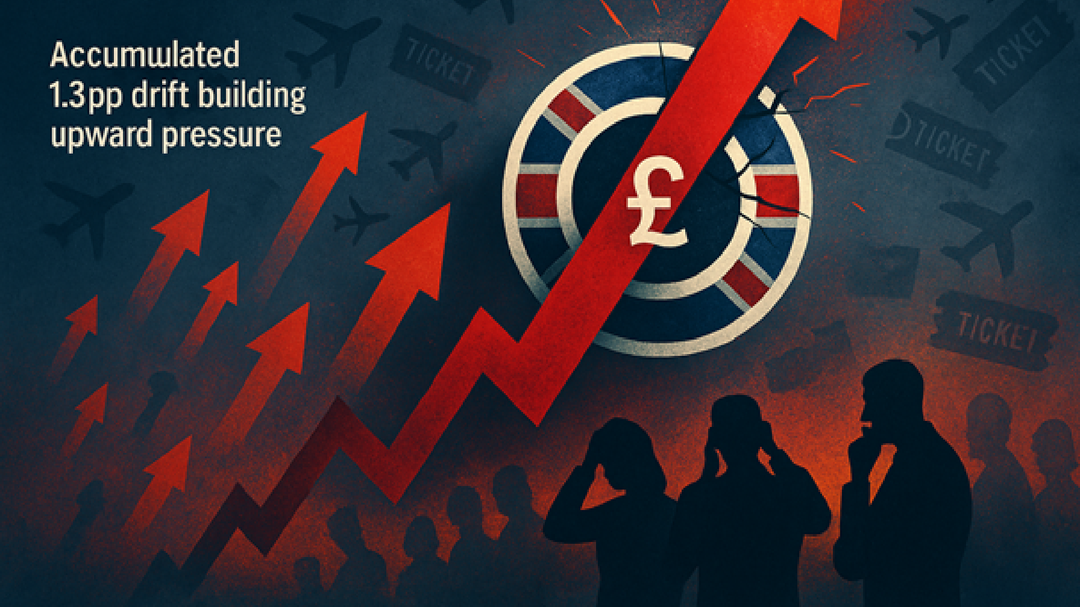August 20, 2025

UK CPI Trend Extends Excess In July
- Another upside surprise in UK CPI inflation extended the accumulated drift to 1.3pp over the past year, yet was only 0.2pp above our old call.
- This outcome matched the BoE’s latest call, with airfares driving the rise, and median pressures holding slightly above a target-consistent pace, so there is less policy impact.
- The MPC was finely balanced in its support for August’s cut, and this rise will not lead dissenters to support past action, let alone another cut, which we still doubt occurs.
By Philip Rush
August 18, 2025

UK Excess Inflation Expectations
- The upwards trend in consensus inflation forecasts reflects persistent excess effective expectations supporting wages amid policymakers’ failure to re-anchor at the target.
- Easing on the assumption of success predictably negated the required conditions, so we forecasted the problem. Nonetheless, expectations were also stickier than we assumed.
- Without renewed progress, wage growth should keep trending above the BoE’s forecast, discouraging further rate cuts. Hikes may even be needed in 2026 to break excesses.
By Philip Rush
August 14, 2025

UK: Slowdown Softened In Q2
- June’s remarkable rebound compounded the resilience revealed by April’s upwards revision, which also broke flimsy fundamental stories blaming tariffs for a slowdown.
- IP no longer declined in April, but the broader growth profile still matches the residual seasonality that spuriously drives GDP dynamics in our forecast. H2 will be weaker.
- The BoE discounts headline GDP volatility without blaming seasonality, so another surprisingly strong quarter will be hard for hawks to ignore, reducing the rate cut risk.
By Philip Rush
August 13, 2025

BoE: Policy Mistake Diagnosis
- Inflation expectations have been persistently too high, while productivity trends poorly, driving wage and price inflation forecasts to grind higher in recent years.
- The BoE’s cutting cycle contributed to reversing the trend decline in expectations, and in turning a slight overshoot into a massive one, with a 3.2pp revision since Feb-23.
- We forecasted this excess for these reasons, so it was predictable and therefore a policy mistake to cut so soon. Further surprise should prevent the MPC from cutting again.
By Philip Rush
By type
-
Inflation
-
Politics
-
Monetary Policy
-
Activity

 UK
UK US
US Euro Area
Euro Area Japan
Japan Canada
Canada Switzerland
Switzerland Norway
Norway Sweden
Sweden Australia
Australia New Zealand
New Zealand China
China Korea
Korea Indonesia
Indonesia Malaysia
Malaysia Philippines
Philippines Singapore
Singapore Thailand
Thailand Vietnam
Vietnam Argentina
Argentina Brazil
Brazil Colombia
Colombia Chile
Chile Mexico
Mexico Peru
Peru